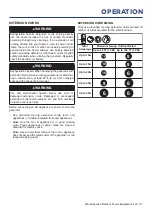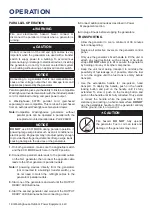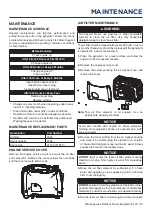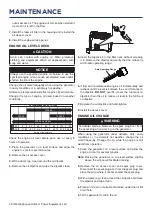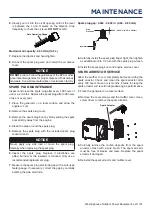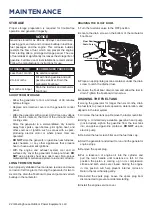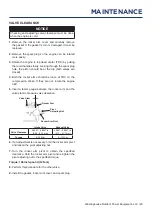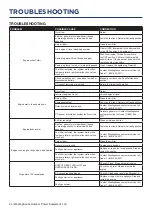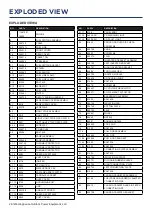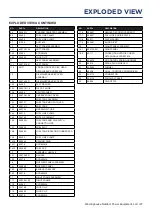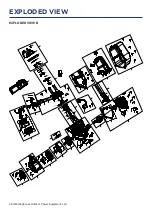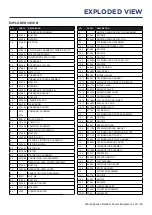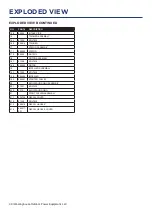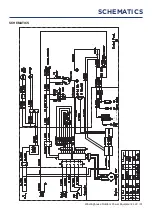
16 | Westinghouse Outdoor Power Equipment, LLC
GENERATOR CAPACITY
NOTICE
DO NOT
overload the generator’s capacity. Exceeding
the generator’s wattage/amperage capacity can damage
the generator and/or electrical devices connected to it.
Make sure the generator can supply enough continuous
(running) and surge (starting) watts for the items you will
power at the same time.
The total power requirements (Volts x Amps = Watts) of all
appliances connected must be considered. Appliance and
power tool manufacturers usually list rating information
near the model or serial number.
To determine power requirements:
1.
Select the items you will power at the same time.
2.
Total the continuous (running) watts of these items. This
is the amount of power the generator must produce
to keep the items running. See the wattage reference
chart on the next page.
3.
Estimate how many surge (starting) watts you will need.
Surge wattage is the short burst of power needed to
start electric motor-driven tools or appliances such as a
circular saw or refrigerator. Because not all motors start
at the same time, total surge watts can be estimated by
adding only the item(s) with the highest additional surge
watts to the total rated watts from step 2.
Example:
Tool or Appliance
Running
Watts*
Starting
Watts*
TV (Tube Type)
300
0
RV Refrigerator
180
600
Radio
200
0
Light (75 Watts)
300
0
Coffee Maker
600
0
1580 Total
Running
Watts*
600
Highest
Starting
Watts*
Total Running Watts
1580
Highest Starting Watts
+ 600
Total Starting Watts Needed
2180
*Wattages listed are approximate. Verify actual wattage.
POWER MANAGEMENT
To prolong the life of the generator and attached devices,
use care when adding electrical loads to the generator.
There should be nothing connected to the generator
outlets before starting the engine. The correct and safe
way to manage generator power is to sequentially add
loads as follows:
1.
With nothing connected to the generator, start the
engine as described in this manual.
2.
Plug in and turn on the first load, preferably the largest
load you have.
3.
Permit the generator output to stabilize (engine runs
smoothly and attached device operates properly).
4.
Plug in and turn on the next load.
5.
Again, permit the generator to stabilize.
6.
Repeat steps 4 and 5 for each additional load.
Wattage Reference
Tool or Appliance
Estimated
Running
Watts*
Estimated
Starting
Watts*
Incandescent Lights
(4 Quantity x 75 Watts)
300
0
TV (Tube Type)
300
0
Sump Pump (1/3 hp)
800
1300
Refrigerator or Freezer
700
2200
Well Pump (1/3 hp)
1000
2000
Radio
200
0
Drill (3/8”, 4 amps)
440
600
Circular Saw
(Heavy Duty, 7-1/4”)
1400
2300
Miter Saw (10”)
1800
1800
Table Saw (10”)
2000
2000
*Wattages listed are approximate. Verify actual wattage.
OPERATION
















